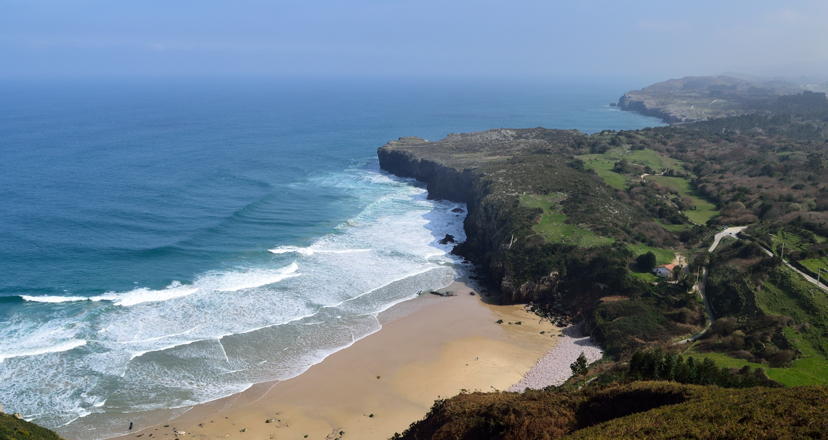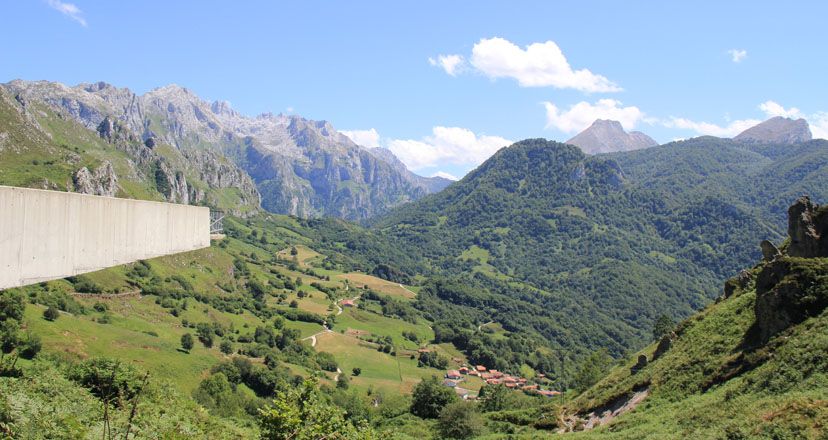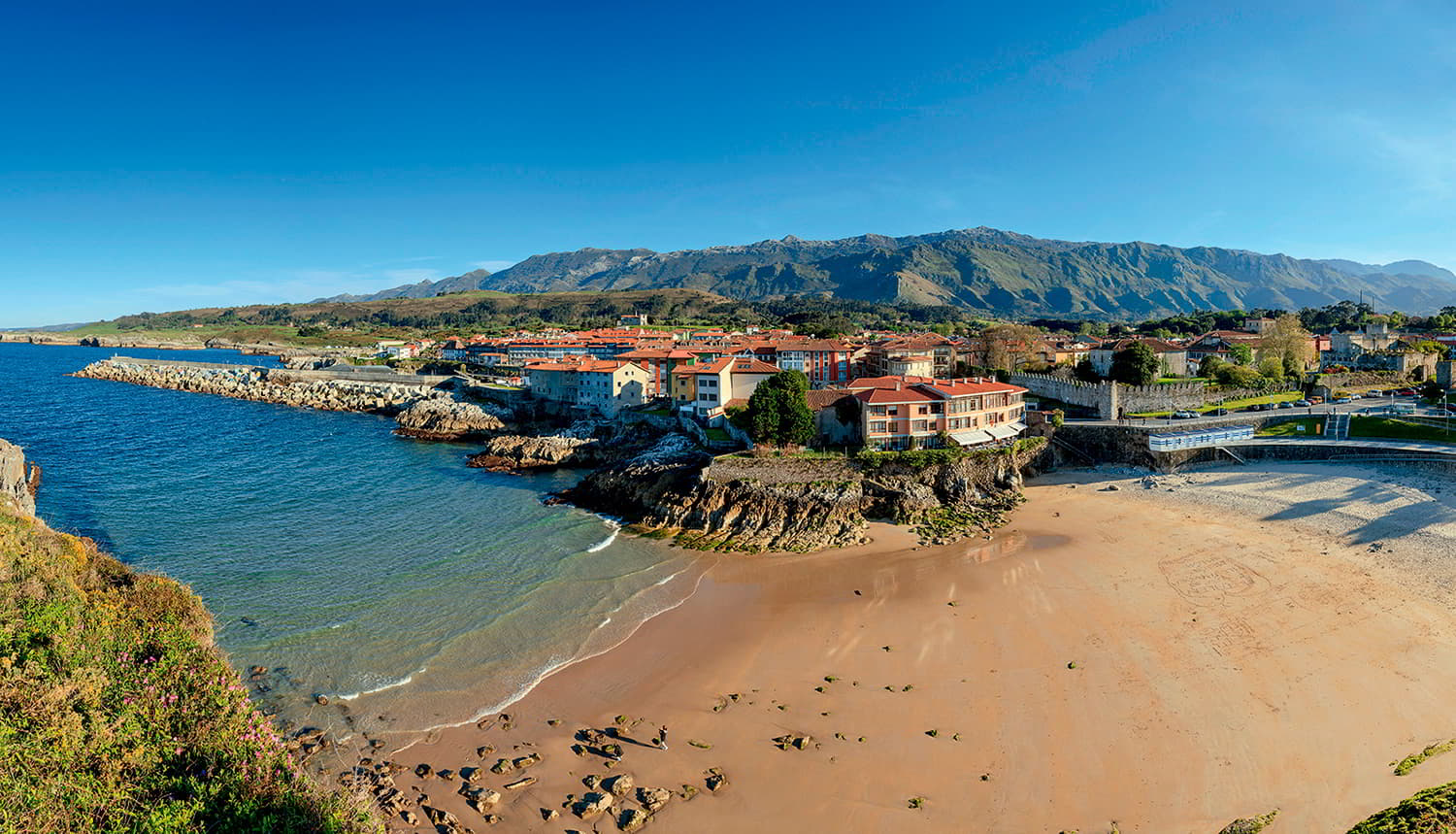Back Llanes, when going to the beach becomes so much more
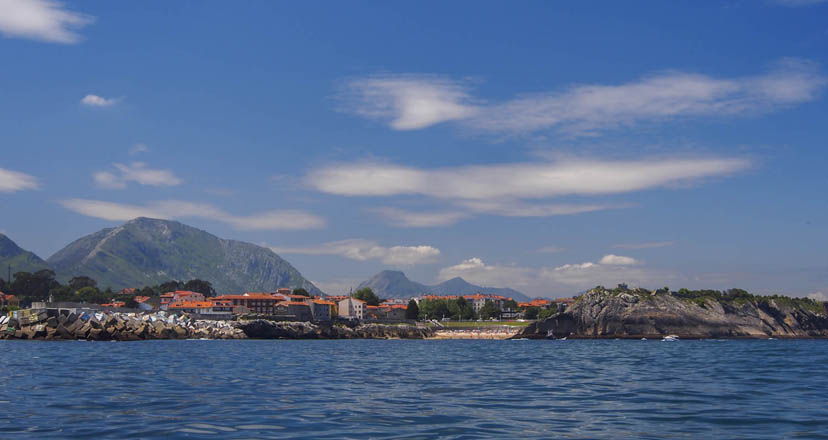
Llanes, much more than just going to the beach
Llanes is one of the most photogenic and photographed places in Asturias. To say Llanes is much more than mountains, much more than coast, much more than beach.
Llanes is one of the most photogenic and photographed places in Asturias. Dozens of film directors, publicists, photographers and other artists from all over the world have been captivated by its landscapes, its villages, its customs, its fiestas and traditions, its capital town... And of course its coast - with its castros (fortified forts) like stone giants -, and its famous beaches, are already part of the imaginary of places of unlimited beauty...
In this tour we draw your attention to some of the characteristics that make Llanes a unique place in the world.
Llanes, an illustrious and emblazoned village
An illustrious and emblazoned town, with mansions and palaces in every nook and corner, with the typical corridors in noble wood overlooking the sometimes gentle and sometimes untamed Bay of Biscay.

Llanes is perfect for leisurely strolling through its cobbled streets, to suddenly discover a square, a palace or several, a passageway, a basilica, the remains of a wall, the mouth of a port that could inspire Norman corsairs, the colours and shapes of Indian houses, and so many other surprises.

In Llanes, the passage of time is felt in the air and can be felt in the form of verses: those of Celso Amieva, which are scattered throughout the old town.
Llanes is always alive, with an atmosphere in the streets, in its charming restaurants and cider bars, in its wine bars, in its terraces, in its shops, it is a continuous coming and going of people from all over the world, of pilgrims on their way to Santiago de Compostela, of tireless travellers...
Llanes naturally overlooks the sea and the mountains. With thrilling views of the Picos de Europa and the Sierra del Cuera, and with beaches that are real jewels such as El Sablón, Puertu Chicu or Toró, the town is a compendium of virtues that will touch your heart forever...
A Jacobean route caressed by the sea breeze and with a taste of saltpetre
The council of Llanes is one hundred percent Jacobean, the Camino de Santiago de la Costa runs through it from east to west, leaving a trail and a constant trickle of pilgrims who do not know where to look at so much beauty that reaches them in a single glance at their eyes.
It is common to see pilgrims wandering through the town and port of Llanes, looking out over the coast, or being fascinated by the cove of Niembro, where its church and cemetery are impressive, reflected clearly on the water as if by magic.
Or take a swim at San Antolín beach, with its powerful anatomy and best waves - ideal for surfing. Although if you want to cool off a little and give your feet a rest, perhaps the waters of the river Bedón, which flows into this beach and divides it in two, are the most suitable remedy.

And of course, at this beach stop, you'll be hit by the effluvia of the church of the Monastery of San Antolín de Bedón, which with its powerful Romanesque presence takes you back to the Middle Ages, when pilgrim traffic was intense and when Benedictine monks administered spirituality on the eastern coast of Asturias.
San Antolin is full of legend, a circumstance very much in keeping with the whole history of the Camino de Santiago de la Costa, shrouded in a halo of mystery...
A monastery on the beach
Can you imagine the church of a monastery embraced by the waves of the sea when the tide rises? Do you find it a suggestive image? Well, in Asturias you don't have to imagine it, it exists and it's in Celoriu...
Celoriu is a village near the town of Llanes, especially famous for the beauty of its beaches, for its unstoppable tourist atmosphere, and for its incessant nautical-sports activity.

And in the midst of this lively setting, the Monastery of San Savador rises discreetly, which has been a spiritual refuge since the 12th century, and which has the Benedictine stamp, like that of San Antolín de Bedón.
When the light permits, the monastery stands out in the landscape, giving Celoriu a different atmosphere: Mountains as a backdrop, village with monastery and the waves of Palombina providing the marine counterpoint.
Even the cormorants are surprised by such beauty!
Estuary, beach and port: the three-in-one of Niembru
At high tide it is an estuary with a narrow and beautiful mouth that leads to a beach and port at the same time, all under the watchful eye of a church and its cemetery, which is one of the most photographed and admired places you can imagine.

When the tide goes out, everything becomes a beach, from the mouth of the port to the end of what is usually the estuary, called Barro and popularly known as Niembru because this is the village that shelters it.

At full tide the whole is like a painting, with its transparent waters and infinite reflections of every detail on the water.

At low tide everything is exposed: the beached boats, the rocky bottoms, the sands shaped by the rising and falling of the tide, and every corner can be explored on foot until the mouth of the harbour is open to the sea.
In fact, the three-in-one of Niembru - estuary, beach and harbour - offers a lot of possibilities for walking, bathing and a wide variety of water sports.
A coastline under the influence of Picos de Europa
The entire coastline of La Llanca extends under the watchful eye of the Picos de Europa and more specifically of the western massif, known as El Cornión.

If you are in Torimbia and cross to San Antolin along the rasa that rises above this mighty shell, you will discover the brilliance of the Picos de Europa, and when you start to descend towards the beach of San Antolin, the whole valley of Posada de Llanes will open up before your eyes, with the Picos in the background and the silhouette of the majestic Peñasanta de Enol, as if it were contemplating you eternally.
When forts are not Celtic buildings
Perhaps the Celts were inspired by the sea forts for their buildings, but this is just a lucubration that is good for dreaming and for showing the beauty of these islets to the world.
The largest concentration of these islets on the coast of Llanis, between the village of Villahermes, where the beach of La Huelga is located, with its famous castro de las Gaviotas, and the beach of Ballota, which also has a mighty castro, is the largest concentration of these islets on the whole of the Asturian coast.

The castros take on a thousand shapes, each one more fantastic than the last, and change their appearance depending on the time of day and the intensity of the tide. When the waves hit them with intensity they seem to turn into waterfalls of unusual beauty and if the sea is calm they are like stone giants whispering stories.
They must have some charm and benefit because seagulls and cormorants use them as a camp, and sailors are both fascinated and fearful of their might in the middle of the sea.
The Stonehenge of Asturias: the Po hill forts
And in the midst of this green and rocky landscape, of immense limestone, of underwater and land caves, where the castros reign just a few metres from the coast, there is a group of islets that are particularly striking for their enigmatic, curious layout and appearance: the castros de Po, so called because of their proximity to the beach and the village of Po.

The most imaginative minds - a very Celtic characteristic - have wanted to see in this group of islets a sort of Asturian-style Stonehenge in the middle of the sea of Llanes, and they even say that they have heard voices coming from inside...

Be that as it may, the Po forts are impressive at any time of the day or night, both by land and by sea, but when sailing, the enigma is even more accentuated: it seems that these forts change their appearance and even their location depending on the time and place from where you look at them...
Beaches of Llanes, limitless beauty for all tastes

The beaches of Llanes make this council famous all over the world: there are open and hidden, with and without forts, urban and rural, and all of them framed in limestone and green, and beaten by crystalline waters, foam and waves. A natural spectacle that makes them unique and desirable.

In addition, the coast of Llanes has another singularity that makes it unique: with very strong tides it offers a unique spectacle: the bufones - jets of pulverised seawater that slip through the cavities of the rock and have a very characteristic sound that gives them their name.
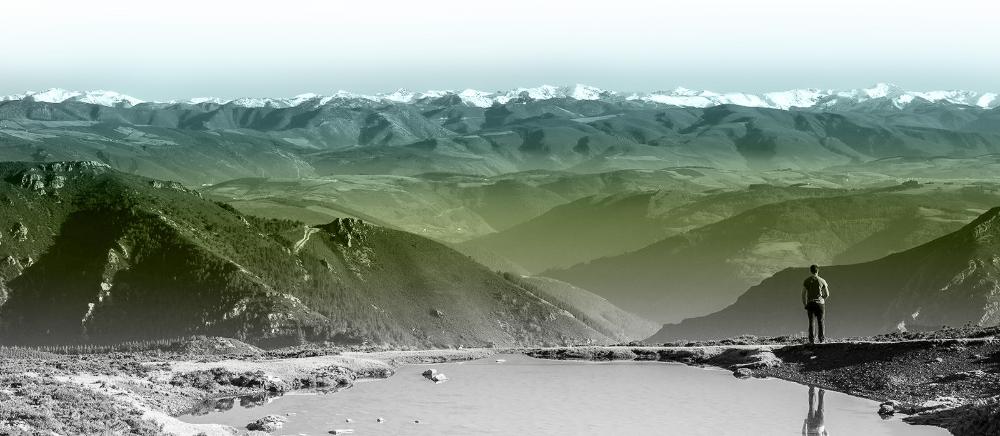
Subscribe to our newsletter and take advantage of offers, discounts, and news
Subscribe

